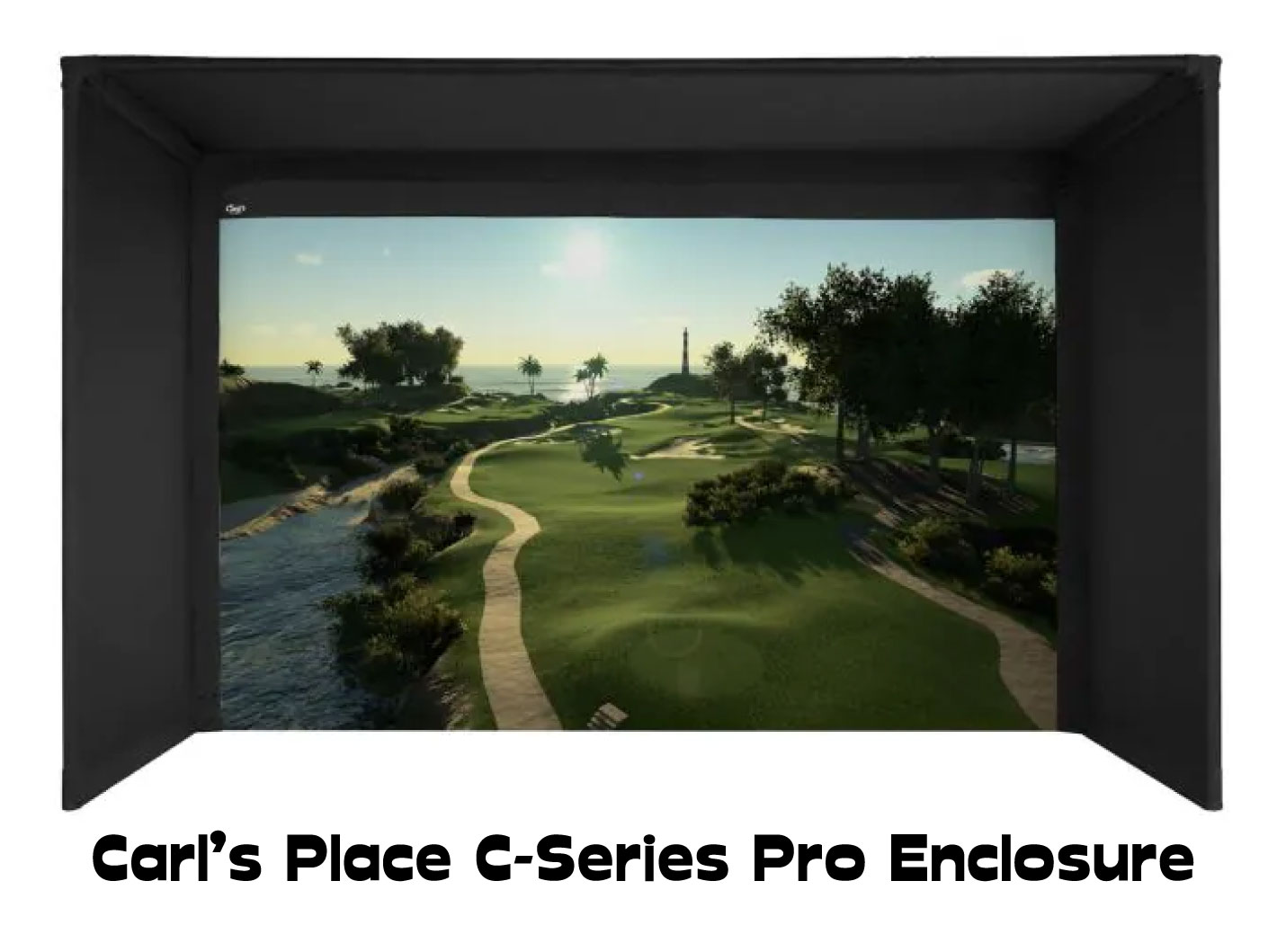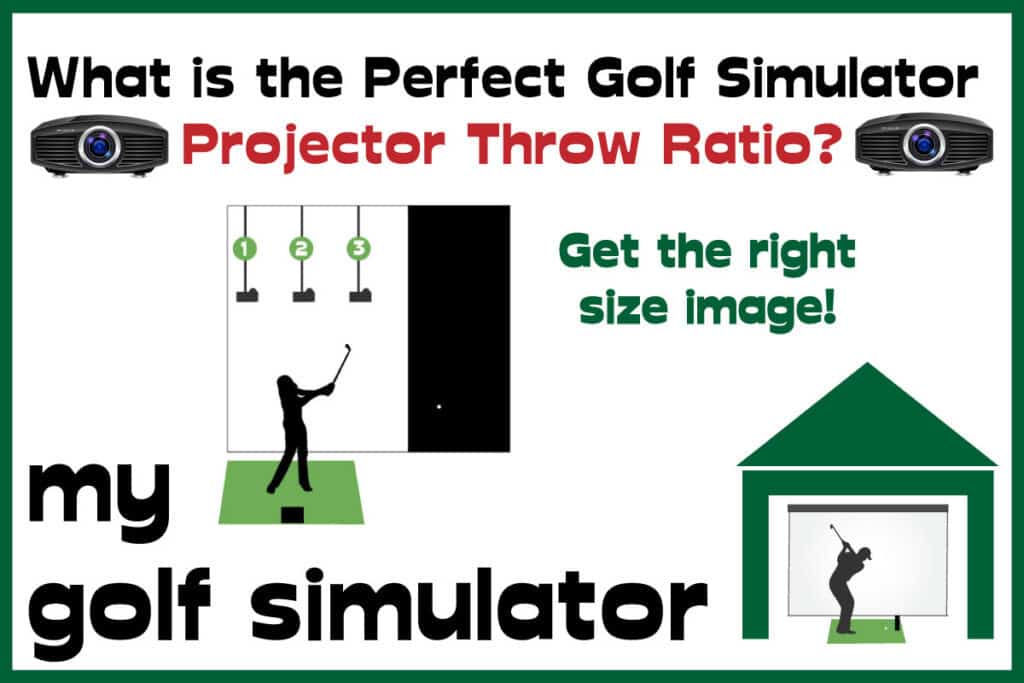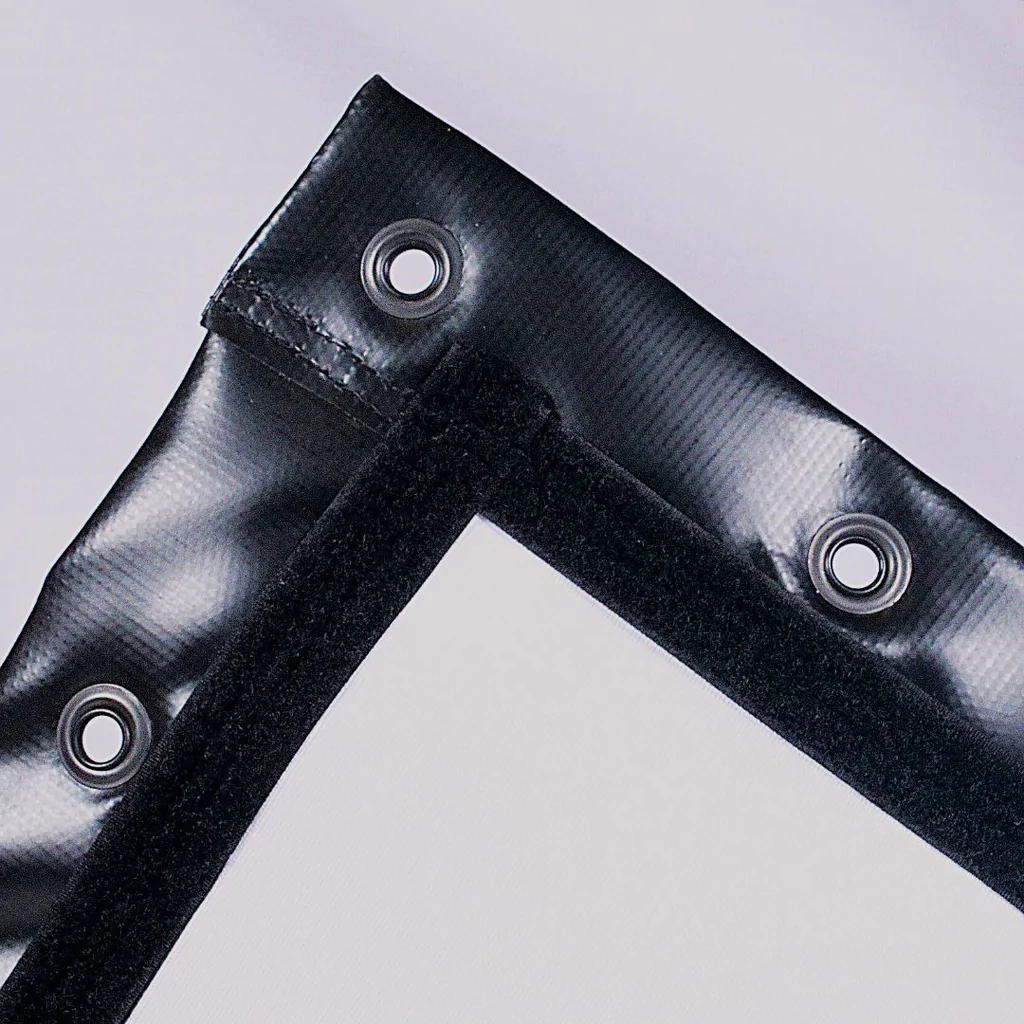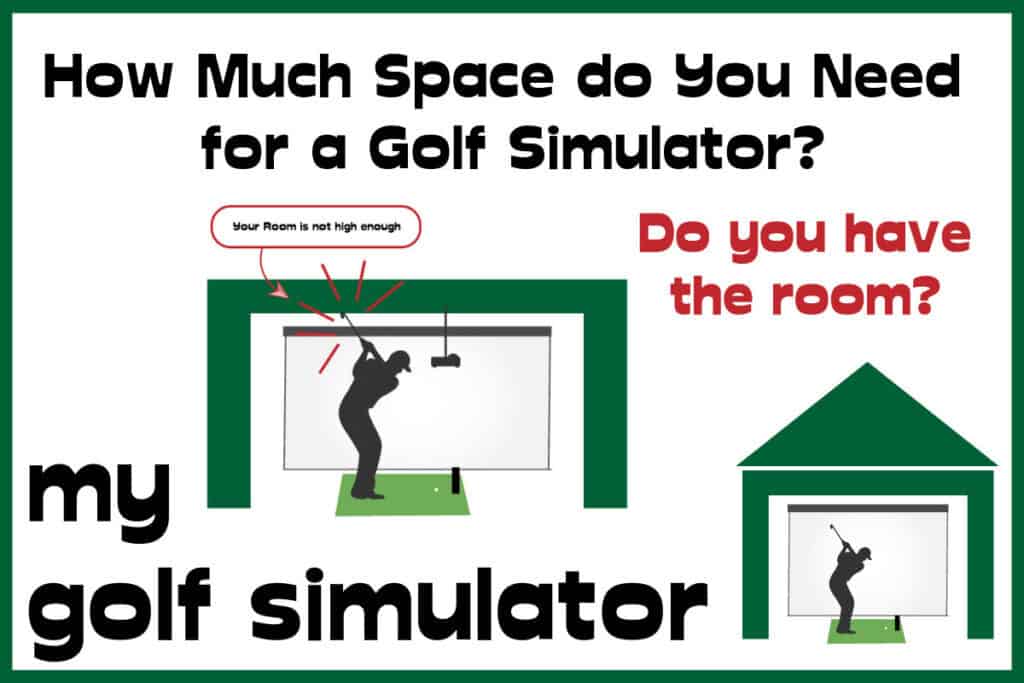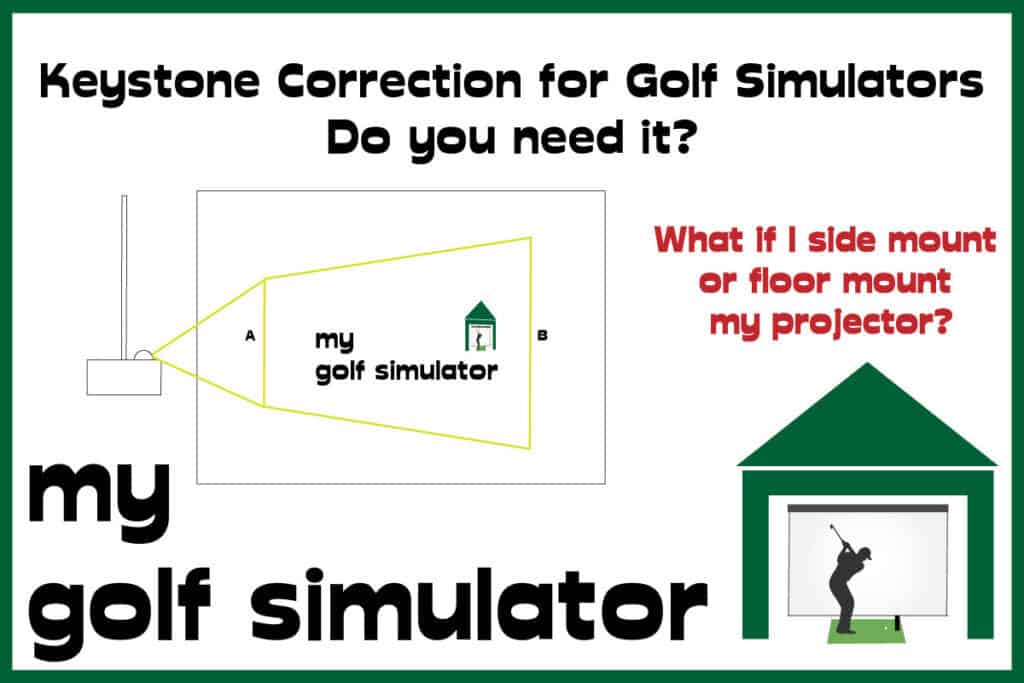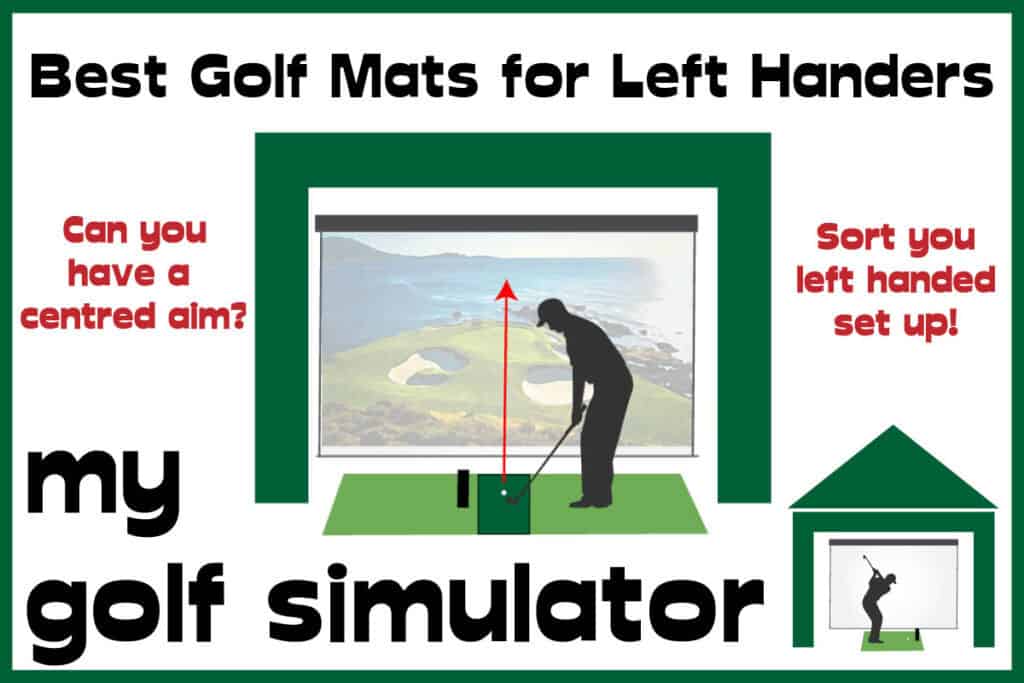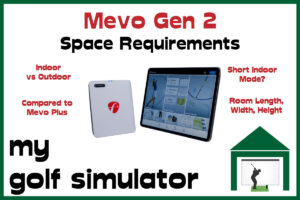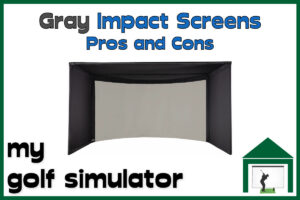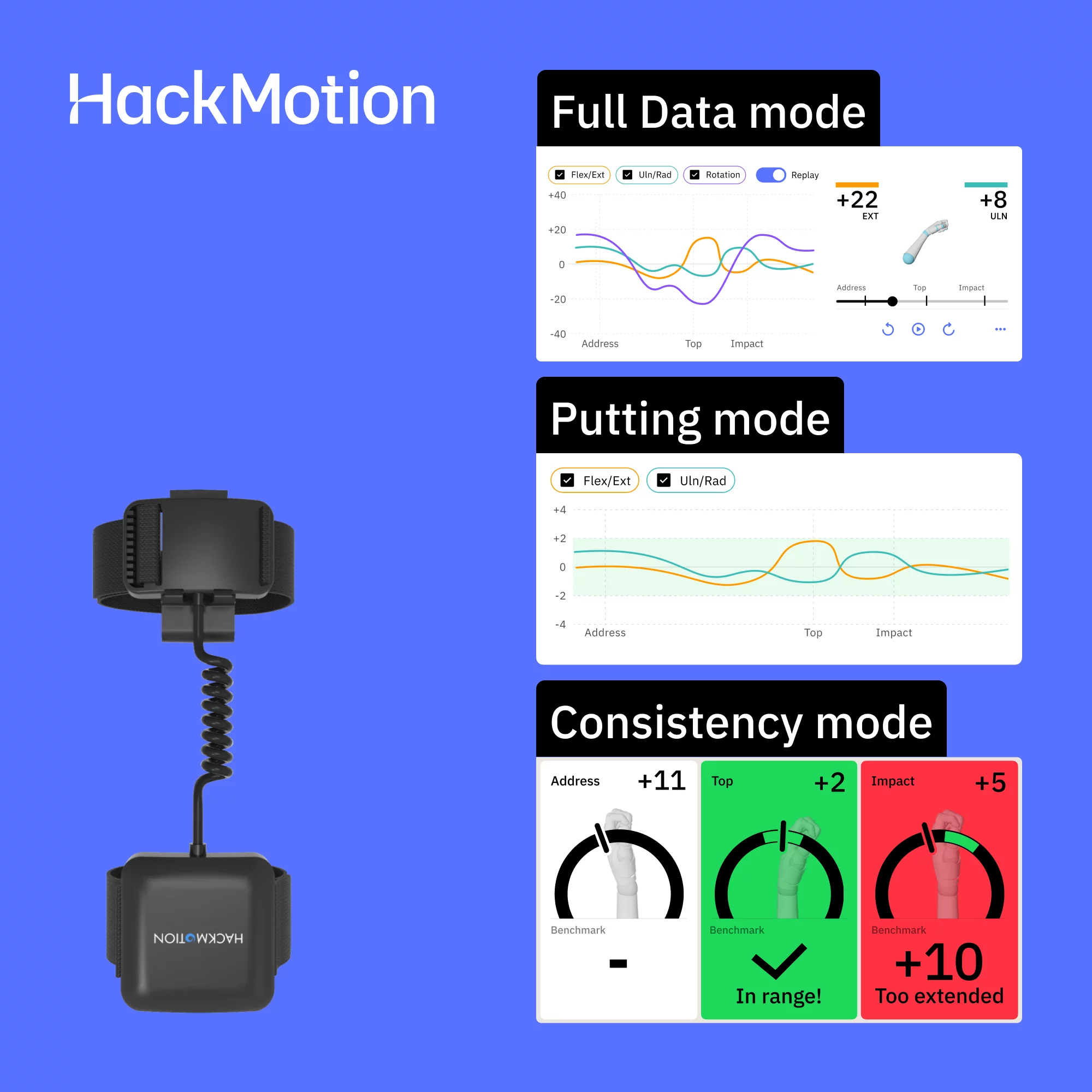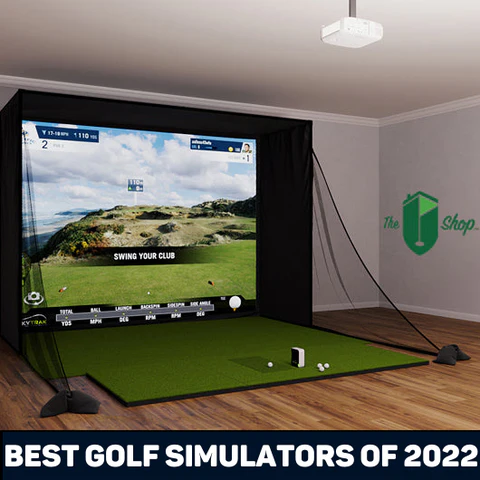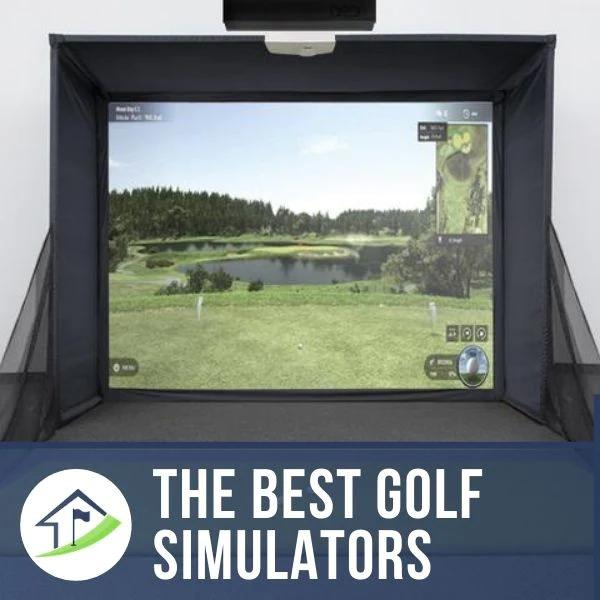The Vital Link between Aspect ratio and Impact Screen Size
Posted in Golf Impact Screens, Projectors
Your projector’s aspect ratio and your impact screen size are inseparable partners in creating a great golf simulator. Aspect ratio simply describes the proportional relationship between image width and height—for example, 16:9 is wider and more cinematic, while 4:3 is taller and more square.
Getting this match wrong leads to black bars, wasted screen space, and a less immersive experience. Get it right, and your projector image will fill the entire screen edge-to-edge, delivering maximum resolution and a simulator setup that feels truly lifelike.
Here’s a quick comparison of the most common aspect ratios in golf simulators, with their pros, cons, and ideal use cases.
| Aspect Ratio | Typical Minimum Size | Best For | Room Requirement | Pros | Cons |
|---|---|---|---|---|---|
| 16:9 | 10′ x 5.6′ | 4K visuals, home theater | Wide rooms (14’+) | Matches modern projectors, best for 4K detail | Needs more width |
| 16:10 | 10′ x 6.25′ | Versatile, many projectors | Medium-width rooms | Balance of width & height, flexible setup | Slightly less cinematic |
| 4:3 | 8′ x 6′ | Narrow rooms, swing comfort | Fits most home spaces | Taller image = better swing clearance | Not as modern-looking |
| 1:1 | 8′ x 8′ | Compact, square setups | Small rooms or bays | Maximizes height, great for training nets | Rare, limited projector support |
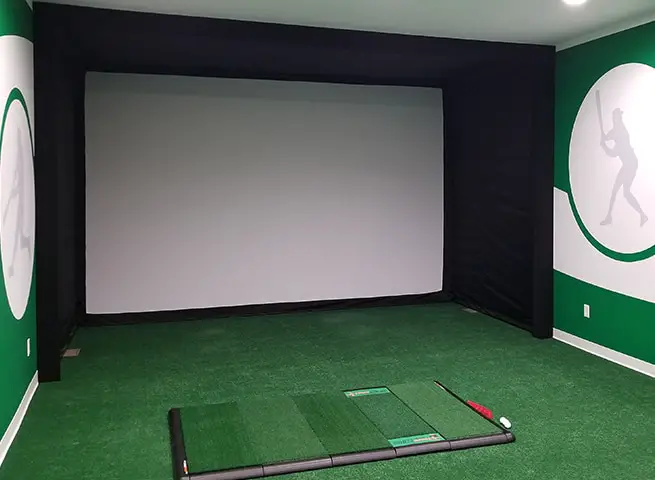
On www.mygolfsimulator.com, you’ll find articles on all aspects of building a golf simulator. I will also link to other sites where you can buy some of the simulator components. Some of these links may be affiliate links, which means if you click them I gain a small commission at no extra cost to you. This really helps out me and my site so thank you in advance! Thanks, Alex @ MyGolfSimulator
What is Aspect Ratio?
Aspect ratio is simply the relationship between the width and height of an image or screen.
- A square image has an aspect ratio of 1:1 (equal width and height).
- A rectangle twice as wide as it is tall has an aspect ratio of 2:1. This could scale to many sizes—e.g., 16ft x 8ft or 14ft x 7ft.
- The most common aspect ratios in golf simulators are 16:9, 16:10, 4:3, and 1:1.
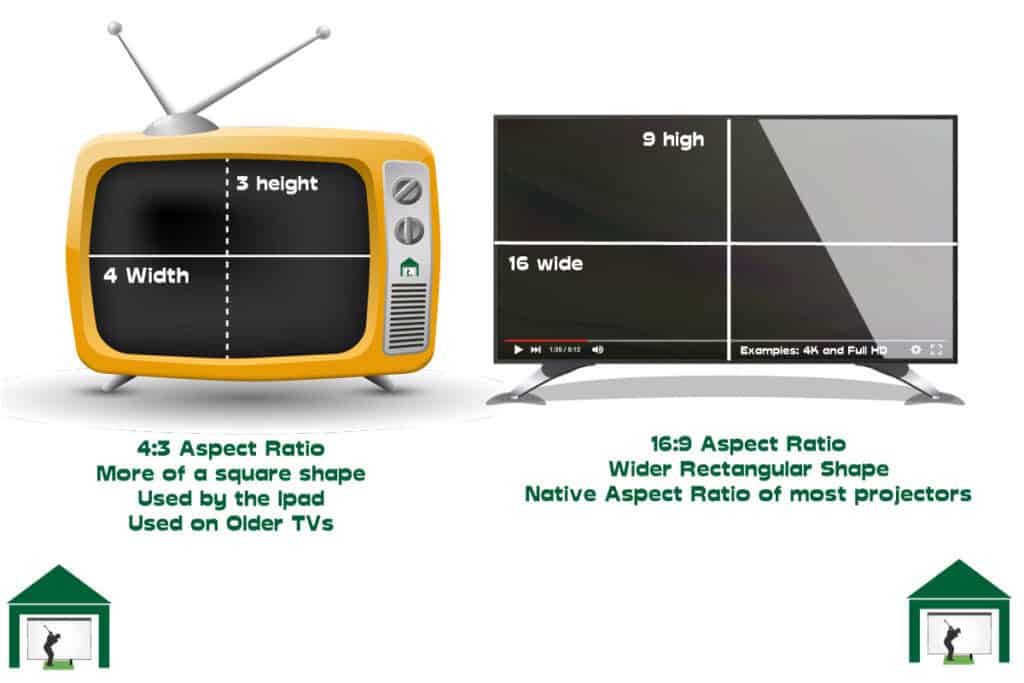
Why Aspect Ratio Matters
✅ Right Aspect Ratio = Right Screen Size = Right Enclosure Fit
Your goal is simple: when you power up your projector, the image should perfectly fill your impact screen. If the aspect ratio of the projector and screen don’t match, you’ll end up with unused black bars or a stretched/distorted image—and trust me, that will bug you every single session.
Plan Ahead: Screen, Enclosure & Space
When planning your golf simulator, remember there are actually four “maximums” you need to consider:
- Total Room Space – the overall dimensions of the room, including clearance.
- Inside the Enclosure – the usable width/height once the frame/netting is in place.
- Impact Screen Area – including eyelets, fixings, or borders around the screen.
- Projected Image Size – the part of the screen the projector will actually fill.
⚠️ Tip: Always size down from the room → enclosure → screen → projected image. It’s easy to shrink your image with projector settings, but very difficult to cut down a too-large impact screen after purchase.
Right Aspect Ratio = Right Impact Screen Size = Right size Enclosure
The ideal scenario when you’ve fully constructed your simulator and switch on your projector is that the image fills the impact screen. You don’t want excess, unused, wasted screen. It’ll bug you for as long as you have your simulator!
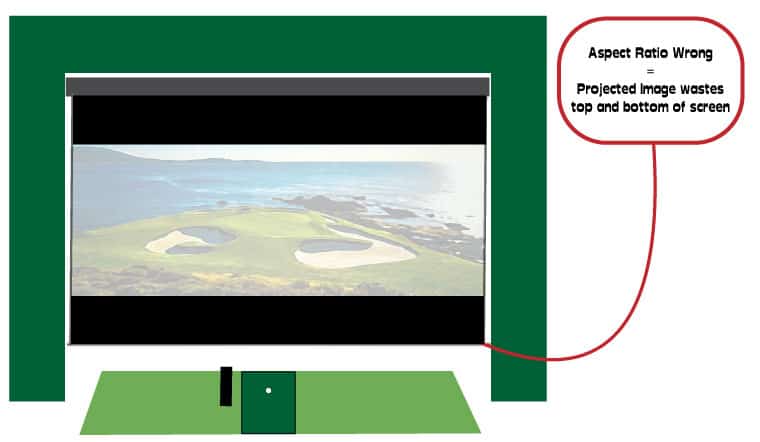
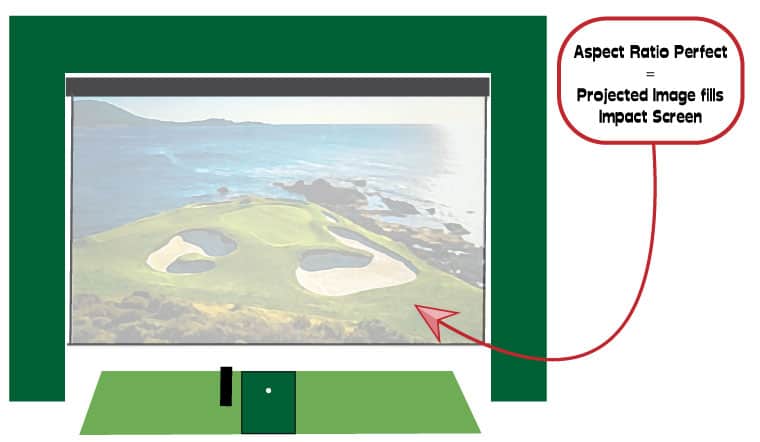
You should now be able to work out what the aspect ratio of your maximum viewable size screen would be.
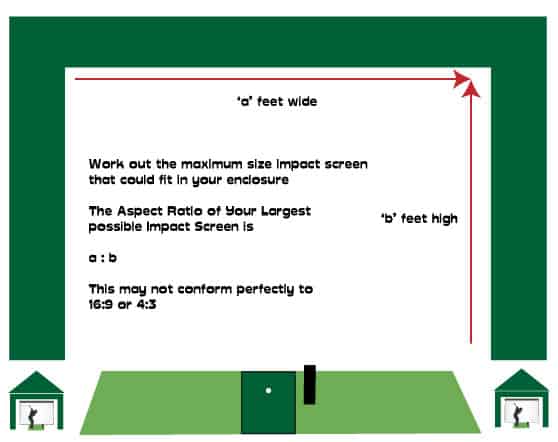
Golfers who are limited on height are likely to have quite a rectangular screen. Golf simulator builds that are limited in width usually have a taller screen with a more squarish shape.
Aspect Ratio and the width of your Simulator space
Why 16:9 Needs Extra Width
If you’re planning a simulator that matches your projector’s native 16:9 aspect ratio, you’ll need plenty of room width. For example, a full-size 16:9 screen measuring 16ft x 9ft gives you a cinematic feel, but 16ft of width is more than most garages or basements can comfortably provide.
👉 If your room isn’t wide enough, you have two choices:
- Shrink the screen while keeping the 16:9 ratio (you’ll lose overall size, but the image stays clean).
- Live with unused screen area above and below the image (black bars), which wastes part of your impact screen.
16:9 Screen Size Examples
Here are some common 16:9 screen dimensions you can plan around:
- 10ft wide x 5ft 8in tall
- 12ft wide x 6ft 9in tall
- 14ft wide x 7ft 11in tall
- 16ft wide x 9ft tall
Each option keeps the proportions of 16:9 but scales to fit different spaces.
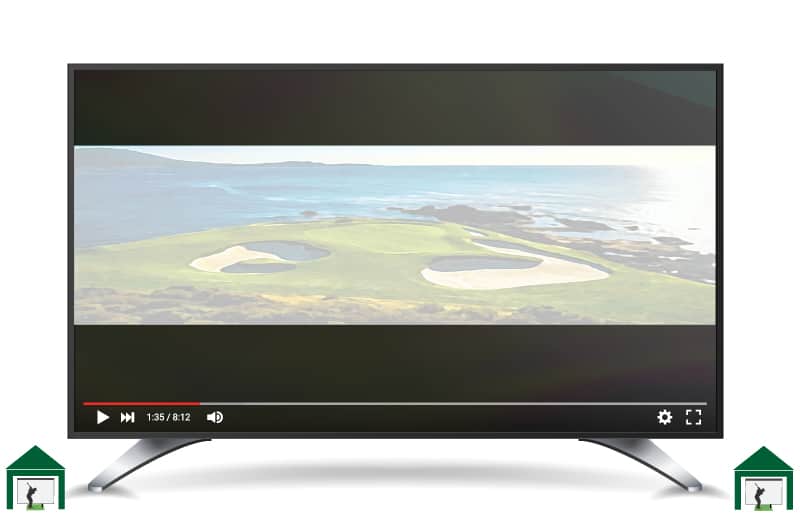
Some examples of screen sizes in a 16:9 aspect ratio are as follows:
- 10ft wide x 5ft 8in tall
- 12ft wide x 6ft 9in tall
- 14ft wide x 7ft 11in tall
- 16ft wide x 9ft tall
Is There a Difference Between Using a Projector or an iPad?
Yes — and it comes down to aspect ratio.
Projectors
Most modern golf simulator projectors (including those in our recommended list) have a native 16:9 aspect ratio. This matches the shape of most PCs and golf simulator software displays, giving you a wide, cinematic image that fills your impact screen edge to edge when planned correctly.
Many projectors can also switch to other ratios (like 4:3 or 16:10) in their settings, but the sharpest, clearest image will always come from the projector’s native aspect ratio.
iPads
All iPads use a 4:3 aspect ratio — taller and squarer than 16:9. This format is ideal for apps and browsing, but it looks different on a large simulator screen.
When connecting an iPad to your simulator (for example, pairing a SkyTrak, Garmin R10, or Rapsodo MLM2PRO over Wi-Fi, then running software on the iPad), you can output to your projector via HDMI or wireless casting.
- If you set your projector to 4:3, the image will match the iPad exactly.
- If you leave it at 16:9, the picture will stretch horizontally — making everything look wider than normal.
Is a 4:3 Impact Screen a Problem?
Not at all. In fact, 4:3 aspect ratio screens are often the best choice for narrow rooms, because they give you more vertical height without requiring excessive width.
- Strengths: Great for SkyTrak’s driving range and compact setups where ceiling height is an issue.
- Limitations: Some golfers feel that certain software like GSPro or TGC 2019 looks a little “boxed in” on 4:3 compared to the cinematic 16:9 look.
Practical Advice
If you also want to watch movies or play games on the setup, remember that most media is in 16:9 — so you’ll see unused screen area above and below on a 4:3 impact screen.
Keep your projector and device on the same aspect ratio whenever possible — it avoids black bars and stretched images.
If you’re using an iPad regularly, a 4:3 screen setup may give a better fit than trying to force widescreen content into a narrow room.
What if I Want to Watch Movies and Play Games Too?
If you’d like your simulator space to double as a home theater or gaming room, then 16:9 is the way to go.
This is the industry standard for both Full HD (1920 x 1080) and 4K UHD (3840 x 2160) displays, which means your movies and games will look exactly as intended — no stretching, no black bars, just a perfectly filled screen.
By fitting your simulator with a 16:9 aspect ratio screen, you’ll enjoy the most versatility:
- Golf – Modern simulator software is optimized for widescreen 16:9.
- Movies – Stream or watch in cinematic HD or 4K.
- Gaming – Console and PC games natively run in 16:9, giving you sharp visuals.
This setup allows your simulator room to transform instantly from practice bay to movie theater or gaming den.
Can I Buy Impact Screens in Specific Sizes for Aspect Ratio?
Absolutely ✅
Suppliers like Carl’s Place offer both pre-sized screens in popular aspect ratios (16:9, 16:10, 4:3, and even 1:1) as well as custom-built screens.
When ordering, you can:
- Enter your exact dimensions to fit your enclosure or wall space.
- Select your aspect ratio to match your projector.
- Choose your preferred fixings (grommets, loop fasteners, etc.).
That way, you can guarantee a perfect match between your projector, impact screen, and room dimensions — avoiding wasted space or mismatched images.

Carl’s Place sells three grades of impact screen, which you can select depending on your budget. These are called Standard, Preferred and Premium.
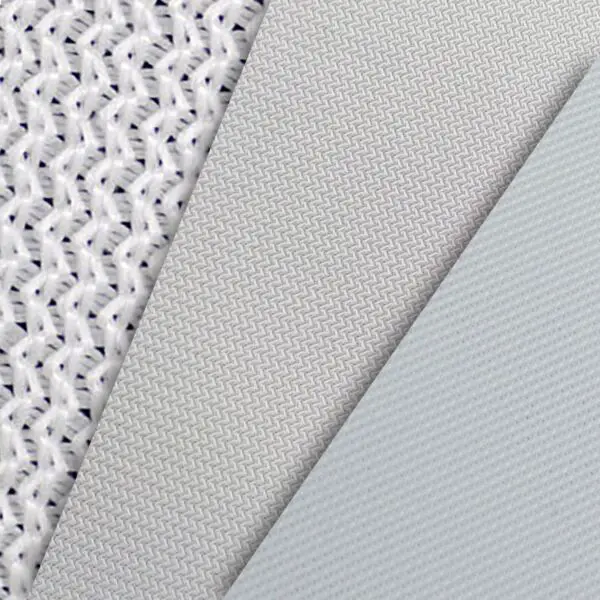
When you go to place an order you can pick sizes based upon several different aspect ratios. You’re given a few example size screens that fit this aspect ratio. This is really useful!
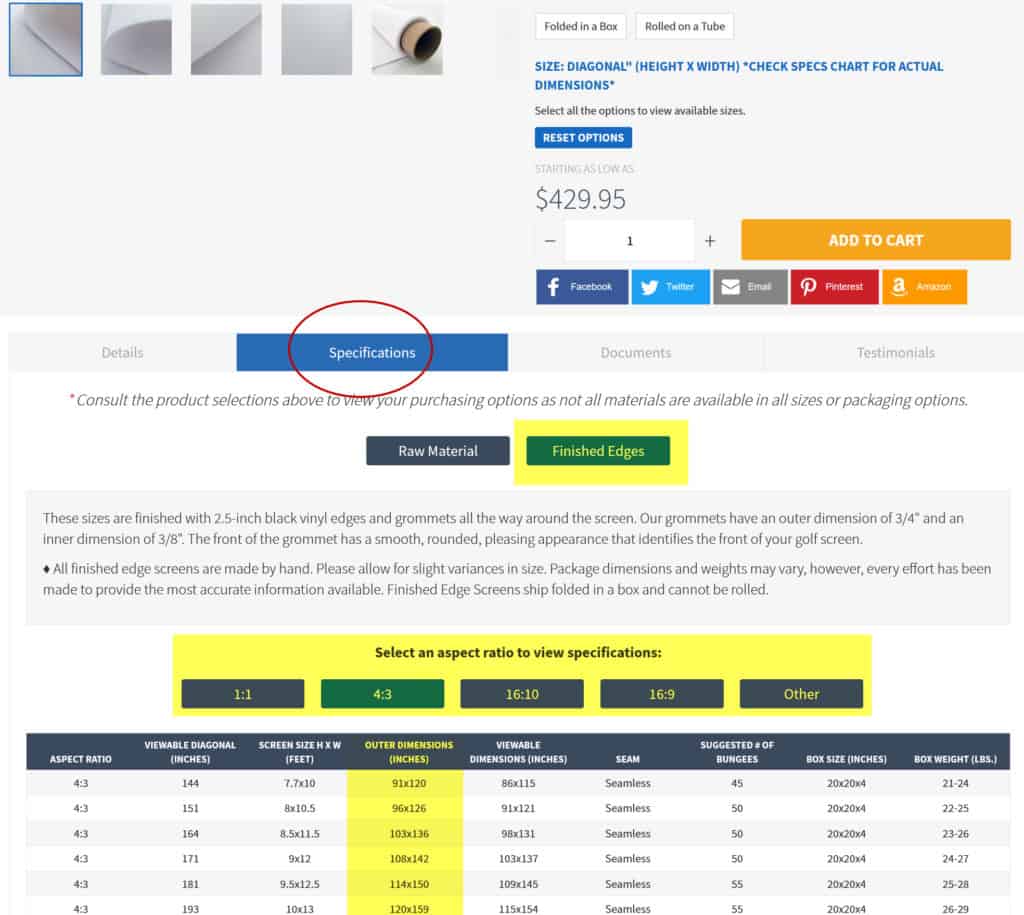
Carl’s Place has an excellent table showing you the total and viewable dimensions of their screens, based on the selected aspect ratio and screen size. You can’t get better than that for clarity with these measurements!
Stop! Consider your projector throw ratio too!
You can’t do all this planning for your perfectly projected image on your amazing new impact screen and forget to consider projector placement.
Do you know the answers to questions like
- How far away from the screen will the projector be placed?
- What throw ratio will your projector need to have?
- Are you going for a side or floor mounted projector set up?
If you’re not sure the answer to these questions, take a look at this selection of articles to help you decide.
You must know where your projector will be placed in order to plan the perfect size impact screen.
To make a mistake here risks having a screen size that’s too big, or worse, too small for the image that you can project.
Summary: Fill the Whole Screen and Immerse Yourself in Your Simulator 🎯
Getting the aspect ratio and impact screen size right from the start is one of the biggest factors in creating a golf simulator that feels truly immersive. Careful planning ensures your image fills the screen, your swing has space, and your setup doubles up for whatever else you’d like to use the room for.
The good news? Even if you’re already partway through your build, you can still apply these principles to fine-tune your simulator.
To recap, here are the key questions to ask yourself:
- ✅ What’s the maximum usable space in your simulator area (width, height, and depth)?
- ✅ What type of setup are you building — simple net + launch monitor, or full projector + software immersion?
- ✅ Will you also use your simulator for movies or gaming, where aspect ratio matters even more?
- ✅ Do you want your projected image to completely fill the screen, or are you happy to live with some unused space (black bars)?
Answering these questions — and choosing a screen that matches both your projector’s native aspect ratio and your room’s dimensions — will help you create a seamless, immersive golf simulator experience.ould give you the knowledge needed to work out how big a screen you can buy.
Check out the range of fantastic impact screens at Carl’s Place where you can customise your screen to aspect-ratio specific sizes!
Carl's Place Premium Impact Screen
- High-Quality Images: Tightly woven, multilayer screen for a smoother, crisper image up to 4K.
- Durability: Designed to withstand direct impact from golf balls traveling up to 250 MPH.
- Custom and Standard Sizes: Available in various sizes to fit different room dimensions.
- Material Quality: Made of three layers of heavy-duty, tight-knit, impact-resistant polyester.
- Noise Reduction: Features a cushioned center layer to quiet noise from the golf ball hitting the screen.
- Versatile Finishing Styles: Options for edge finishing to suit installation needs.
- Compatibility: Can be attached to different frames, used with golf enclosures, or as part of a DIY golf simulator.
Carl’s Premium Golf Simulator Screen features a bright white surface with ultra-tight weaves, enhancing image detail and quality. There is a central cushioning layer that allows a reduction in light bleed, bounceback, and noise.
- Excellent Image Quality: Realistic golf simulation experience.
- High Durability: Suitable for intense use with high-speed impacts.
- Customizable Size and Finish: Tailored to specific room sizes and design preferences.
- Noise Reduction: Less noise disturbance during play.
- Versatile Installation Options: Flexible setup or integration into existing setups.
- Few - more expensive than budget screens, but this screen is worth it in my opinion
Thanks for reading! Take a look at our other related articles below!
Mevo Gen 2 Space Requirements
Gray Impact Screens – Pros and Cons
ABOUT THE AUTHOR
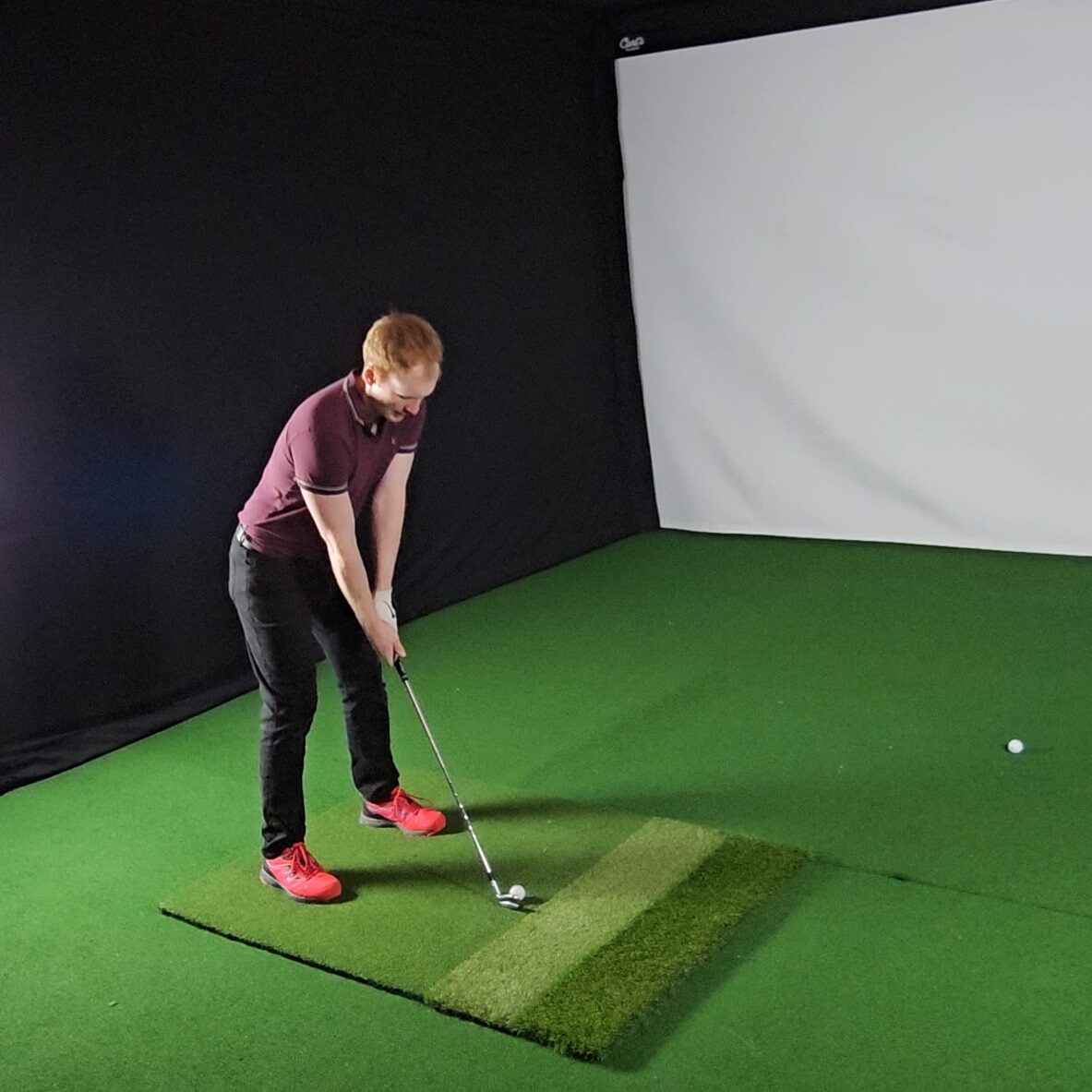
Hello! My name is Alex and it is my mission to bring you all the information you need to build your own home golf simulator! I hope mygolfsimulator.com helps you on your journey to better golf at home!
LEGAL INFORMATION
On this site, you'll find articles on all aspects of building a golf simulator. I will also link to other sites where you can buy some of the simulator components. Some of these links may be affiliate links, which means if you click them I gain a small commission at no extra cost to you. This really helps out me and my site so thank you in advance! mygolfsimulator.com and all related social media accounts are property of Awonline LTD.
